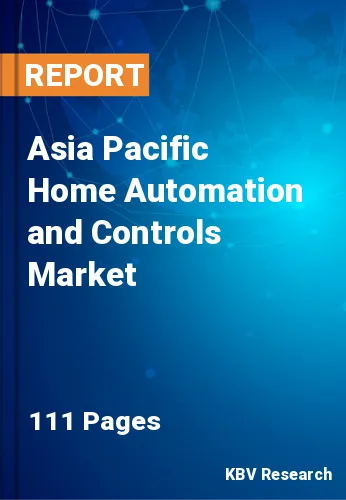The Asia Pacific Home Automation and Control Market would witness market growth of 11.9% CAGR during the forecast period (2022-2028).
The connected living room has several benefits, including comfort, control, and energy savings. They can also help in providing security and save time. These elements are increasing the market's need for connected living rooms. Growing consumer desire for a good standard of living has an impact on market expansion as well.
Consumer electronics' strong industry penetration, the latest technologies' rising adoption rates, and consumers' sizable financial investments in connected living rooms are all expected to support the market's expansion. Furthermore, to meet the rising need for speedy services, the hotel industry is switching to commercial smart kitchen appliances.
With a rise in urban population and increased spending on house renovations, smart home gadgets are gaining popularity in emerging nations. During the forecast period, it is predicted that increasing consumer demand for nutrient-dense food and growing awareness about the benefits of living a healthy lifestyle would drive the global market for smart kitchen equipment. To increase their revenue streams, major businesses are releasing smart home products that are AI-powered.
As a result, and a natural consequence of economic development, urbanization in India has progressed similarly to urbanization elsewhere in the world. The shift in employment from rural to urban-based products and services is one part of the trend. Improvements in agricultural performance have aided urbanization, as evidenced by some of the nation's top districts for the production of rice and wheat. According to the Planning Commission of the Indian Government, in India, only 25 million, or 10.84%, people were living in urban areas in 1901.
The China market dominated the Asia Pacific Home Automation and Controls Market by Country in 2021, and would continue to be a dominant market till 2028; thereby, achieving a market value of $8,631.1 Million by 2028.The Japan market is estimated to grow a CAGR of 11.2% during (2022 - 2028). Additionally, The India market would experience a CAGR of 12.6% during (2022 - 2028).
Based on Application, the market is segmented into Safety & Security, Entertainment, HVAC, Lighting and Others. Based on Type, the market is segmented into Home Automation System, Mainstream Home Automation System and Managed Home Automation System. Based on Technology, the market is segmented into Computing Network Home Automation Systems, Wireless Home Automation Systems, Wired Home Automation Systems and Powerline Home Automation Systems. Based on countries, the market is segmented into China, Japan, India, South Korea, Singapore, Malaysia, and Rest of Asia Pacific.
Free Valuable Insights: The Worldwide Home Automation and Controls Market is Projected to reach USD 106.6 Billion by 2028, at a CAGR of 11.1%
The market research report covers the analysis of key stake holders of the market. Key companies profiled in the report include Siemens AG, Honeywell International, Inc., ABB Group, Johnson Controls International PLC, Harman International Industries, Inc. (Samsung Electronics Co., Ltd.), Snap One Holdings Corp. (Control4), Legrand Group, ADT Inc., Nice S.p.A., and Leviton Manufacturing Co., Inc.
By Application
By Type
By Technology
By Country
Our team of dedicated experts can provide you with attractive expansion opportunities for your business.

